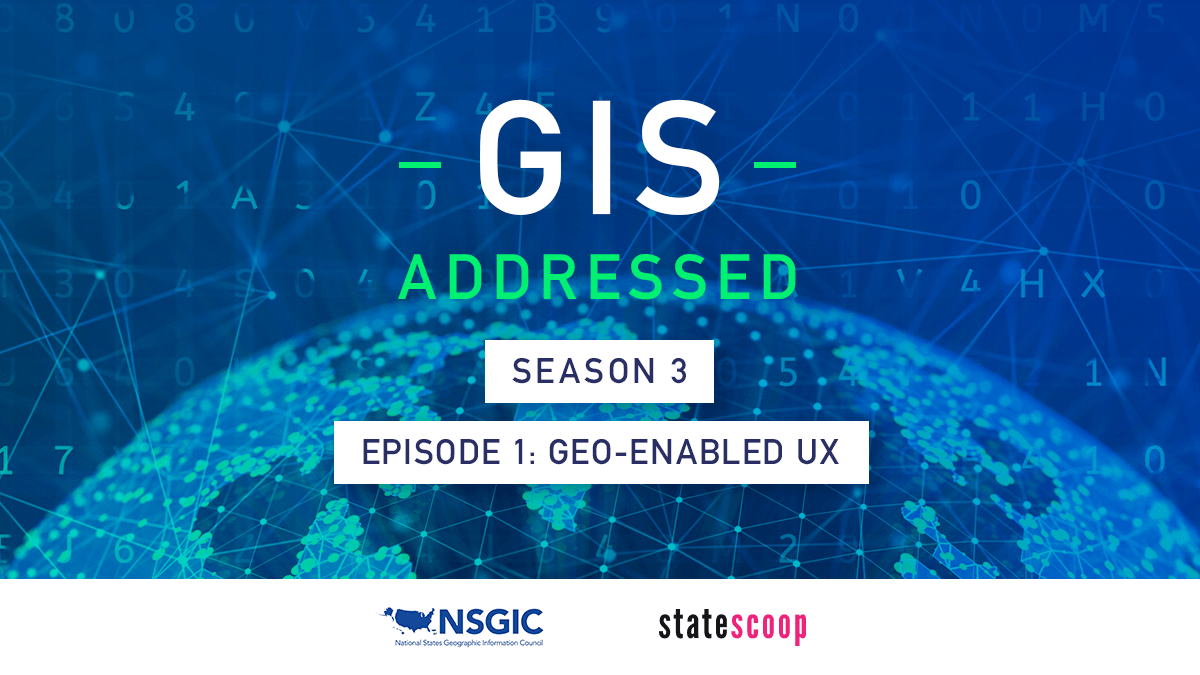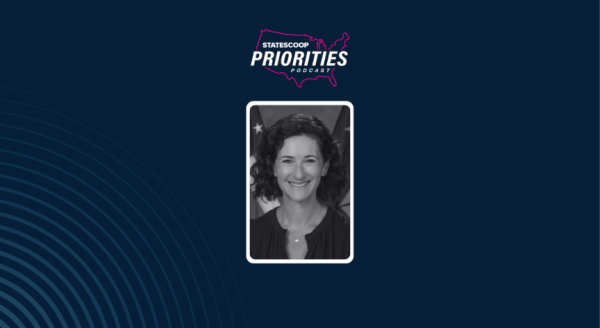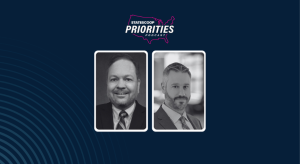
For a ‘golden’ user experience, digital services need GIS
The average citizen might not consider the role that geographic data plays when it comes to creating the ideal user experience in government’s digital services, but for geospatial information systems experts, the importance of that role is clear. In the latest episode of StateScoop’s GIS Addressed podcast, Karen Rogers, the current president of the National States Geographic Information Council and staff policy analyst at the Wyoming Department of Game and Fish, explains just how GIS can aid in optimizing user experience.
“So much of what government does is based on location,” Rogers says on the podcast. “Eighty to 90 percent of data has a geographic component. It just makes sense to start leveraging the technology to embed geolocation services into what we do.”
To do that, Rogers says, state GIS leaders should have regular discussions with developers — especially ones that are not well-versed in geospatial technologies — to encourage them to consider enabling location services in the apps and products they’re building.
In addition to those conversations with developers, GIS experts need to talk to key decision makers within the state to evangelize the impact that geographic elements can have on a digital services, she says. By engaging in those conversations, Rogers says GIS experts can find chances to collaborate across agencies and share data.
“[Through collaboration], you find these opportunities, golden opportunities, to enrich what they’re doing and make connections with other ideas and other efforts,” Rogers says. “This is an exciting place where technology is just giving us this opportunity to make incredible connections and really streamline things and bring efficiency.”
GIS is already embedded in many of government’s digital services, including 311 apps, like those in place in Philadelphia and Chicago. GIS is also a key piece of next-generation 911 discussions in the public safety and law enforcement realm. Whatever the application, Rogers says the use of geographic data can align closely with other technologies to state government’s challenges — and save money.
“When you use GIS [to address] business needs, you’re gaining efficiency through leveraging the location information,” Rogers says. “Once you can capture that location information, the more it can be used and shared among a variety of agencies, and the better use you’re going to have of government time and money.”
In its biennial Geospatial Maturity Assessment released last December, NSGIC found that states are not fully prepared to adopt critical emerging technologies like next-generation 911 and geo-enabled elections systems, owing largely to an immature GIS data infrastructure. That needs to change, Rogers says.
“It’s efficiency in your time, it’s efficiency that could save lives,” Rogers says. “It just makes for better government.”
On the podcast:
- Karen Rogers, staff policy analyst, Wyoming Game and Fish Department
- Jake Williams, associate publisher and director of strategic initiatives, StateScoop
Things to listen for:
- GIS integration in government services started with “low-hanging fruit,” Rogers says — things like snow-plow tracking and ensuring citizens know which day their trash is collected.
- Societal changes, and the dominance of apps that rely on a geographic component, like Uber, are driving government to embrace GIS in digital services faster, Rogers says.
- Wildfires in California have driven state government leaders to lean on GIS to power a suite of citizen-focused apps on preparedness and recovery in the state.
- Next-generation 911 is about ensuring citizens won’t have to repeat information in an emergency and ensuring dispatchers and first responders have as much information as possible at hand when responding to an event.
- As the 2020 election season continues, NSGIC’s Geo-Enabled Elections project will result in a deeper tie between citizens and their election information. It’s also expected to improve access to information about where voters can find polling places and information about candidates, Rogers says.
This episode of GIS Addressed is part of StateScoop and EdScoop’s special report on user experience. Read the rest of the report.
GIS Addressed is a podcast from StateScoop and the National States Geographic Information Council about the role of geographic information systems in government. Catch up by listening to Season 1 (2018) and Season 2 (2019).
Catch all of StateScoop’s podcasts on Soundcloud, Apple Podcasts, Spotify, Google Play, Stitcher or Alexa’s TuneIn.


